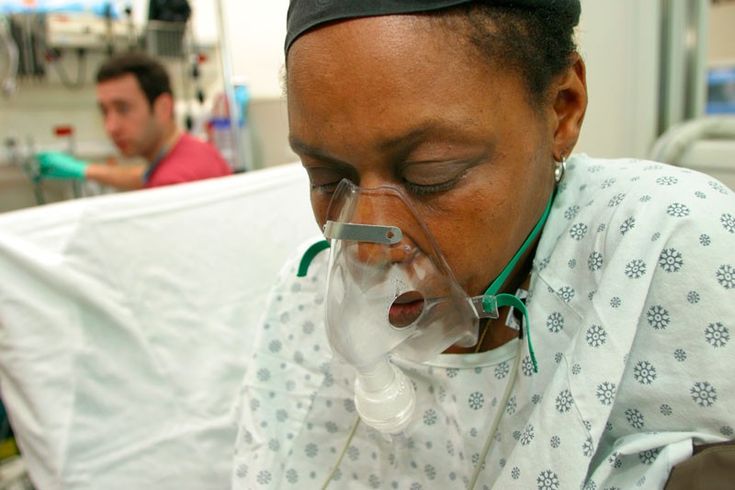Social issues in the United States have long been a topic of intense debate and activism.

While progress has been made in many areas, challenges persist, especially in health care, inequality, and race. As of 2025, these issues continue to define much of the political and social discourse, influencing policy decisions, economic structures, and day-to-day life for millions of Americans. The ways in which these issues intersect with each other are crucial in understanding the complex landscape of American society.
Health Care: Access, Affordability, and Reform
The U.S. health care system remains one of the most contentious topics in American politics. Despite spending more on health care than any other nation, the U.S. has some of the worst health outcomes among developed countries. Health disparities, access to services, and affordability are critical issues that continue to challenge the system.

Affordability and Access
One of the most pressing problems is the affordability of care. While the Affordable Care Act (ACA) expanded insurance coverage for millions of Americans, millions more remain uninsured or underinsured. Despite efforts to expand Medicaid in some states, nearly 2 million Americans in states that did not expand Medicaid still lack access to affordable insurance. Additionally, high deductibles, co-pays, and out-of-pocket expenses make even insured individuals vulnerable to financial ruin if faced with serious illness or injury.
Prescription drug prices have also become a significant burden, with many Americans unable to afford life-saving medications. A combination of high costs and a fragmented system of insurance providers has made the U.S. an outlier when compared to other developed nations, where health care is universally available and typically more affordable.
Mental Health and Public Health Crisis
The mental health crisis in the U.S. is another growing concern. The pandemic exacerbated existing mental health challenges, and issues like depression, anxiety, and substance abuse have become increasingly prevalent, especially among younger populations. Despite growing awareness, mental health services remain insufficient, underfunded, and inaccessible to many, particularly in rural and underserved areas.
The opioid crisis remains a serious public health issue, with millions of people still affected by opioid addiction and overdose deaths. While efforts to address this crisis have intensified, the need for comprehensive treatment programs, rehabilitation facilities, and prevention measures remains urgent.
Health Care Reform: Prospects for Change
The debate over health care reform in the U.S. remains polarized. On one side, there are calls for a universal health care system, with proposals like “Medicare for All” being championed by progressives. These proposals argue that health care should be a basic human right, and that a single-payer system would reduce administrative costs, expand coverage, and improve overall public health. However, opposition remains strong, particularly from conservative lawmakers and the private insurance industry, who argue that such reforms would be too expensive and would undermine the quality of care.
On the other side, moderate proposals like the expansion of the ACA or the introduction of a public option (a government-run health insurance plan that would compete with private insurers) have gained traction but face considerable opposition from Republicans and certain business groups. Given the polarized nature of American politics, it remains to be seen whether a truly transformative reform will be enacted in the near future.
Inequality: Economic, Racial, and Educational Gaps

Economic Inequality
Income inequality in the United States has reached alarming levels. The wealth gap between the richest and the poorest Americans has widened significantly over the past few decades. According to data from the U.S. Census Bureau, the top 1% of earners hold a disproportionate share of the nation’s wealth, while millions of Americans live paycheck to paycheck, unable to save or accumulate wealth. The consequences of this economic divide are far-reaching, affecting access to education, health care, housing, and other essential services.
The COVID-19 pandemic exacerbated these inequalities. While some wealthy Americans saw their wealth increase during the pandemic, many low-income workers, especially those in hospitality, retail, and service industries, faced layoffs, furloughs, and economic hardship. The rising cost of housing in urban centers like San Francisco, New York, and Los Angeles has pushed many working-class families out of the market, further contributing to the wealth divide.
Despite some progress in raising the federal minimum wage in certain states, it remains far below what many Americans need to afford basic living expenses. Efforts to implement a national $15 minimum wage have been stalled in Congress, and the economic recovery from the pandemic has been slow and uneven.
Wealth Inequality and the Role of Systemic Factors
The economic disparities in the U.S. are deeply intertwined with historical and systemic issues such as racial discrimination, educational inequality, and housing segregation. Wealth is often passed down through generations, and systemic barriers prevent many families, particularly Black, Latino, and Native American communities, from accumulating wealth.
The U.S. education system also perpetuates inequality, with students in low-income areas often attending underfunded schools, lacking access to advanced coursework, extracurricular activities, and experienced teachers. Public schools in wealthier neighborhoods, on the other hand, benefit from higher property taxes and thus have more resources for their students. This education gap has long-term consequences, as those who receive subpar educations are often relegated to lower-paying jobs, perpetuating the cycle of poverty.
Housing inequality remains a significant issue, particularly for communities of color. Redlining and discriminatory housing practices, though outlawed decades ago, have had lasting impacts on wealth accumulation and access to quality housing. Many Black and Latino families were systematically excluded from homeownership opportunities, preventing them from building equity in the same way that white families were able to. Even today, the racial wealth gap remains vast, with Black Americans holding just a fraction of the wealth that white Americans do.
Access to Health Care and Inequality
Access to health care is another area where inequality is pronounced. Black, Latino, and Indigenous communities experience worse health outcomes and face greater barriers to accessing quality care. These communities are more likely to be uninsured, underinsured, or live in areas with limited access to medical services. The racial disparities in health care were tragically laid bare during the COVID-19 pandemic, which disproportionately affected communities of color due to pre-existing health conditions, lack of access to care, and economic hardships.
Race and Social Justice in America

Racial Inequality: A Legacy of Systemic Racism
The issue of race remains central to discussions about inequality in the United States. Despite significant progress in civil rights over the past century, racial inequality continues to persist in nearly every facet of life. Black Americans, in particular, continue to face discrimination in employment, housing, education, and the criminal justice system. These systemic disparities are often rooted in the nation’s history of slavery, segregation, and institutionalized racism.
The Black Lives Matter movement, which gained national prominence after the killing of George Floyd in 2020, has drawn attention to police violence and racial injustice. The protests sparked a broader conversation about reforming the criminal justice system, addressing systemic racism, and ensuring accountability for police officers who engage in misconduct. While there have been some reforms at the local and state levels, substantial change has been slow, and many advocates argue that deeper, more systemic changes are necessary.
Affirmative Action and Education
Affirmative action policies, which aim to increase representation and opportunities for historically marginalized groups in education and employment, remain a controversial subject in the U.S. The U.S. Supreme Court has seen challenges to affirmative action policies, with some arguing that they constitute reverse discrimination, while others contend that they are essential for rectifying the legacy of racial inequality. The outcome of these legal battles could have far-reaching implications for how race is considered in admissions, hiring, and other areas of public life.
The Role of Reparations
Calls for reparations for Black Americans, in recognition of the historical injustices of slavery and segregation, have gained momentum in recent years. Proponents argue that reparations are necessary to address the long-lasting economic and social impacts of slavery and systemic racism. Several cities, including Evanston, Illinois, and San Francisco, have initiated pilot programs aimed at providing financial compensation or other forms of restitution to Black residents. While reparations are a deeply divisive issue, they have become an important part of the broader conversation about racial justice in the U.S.



